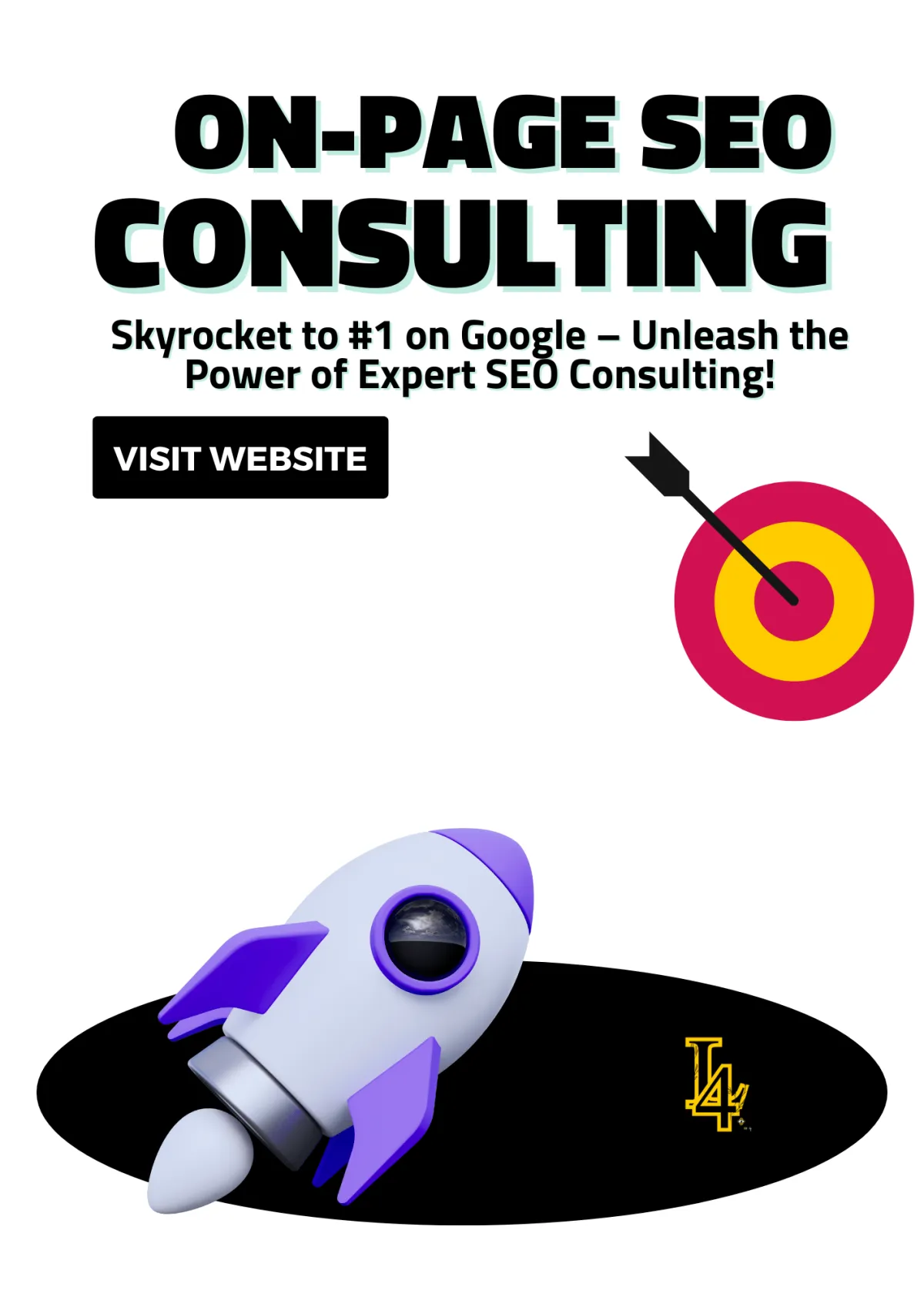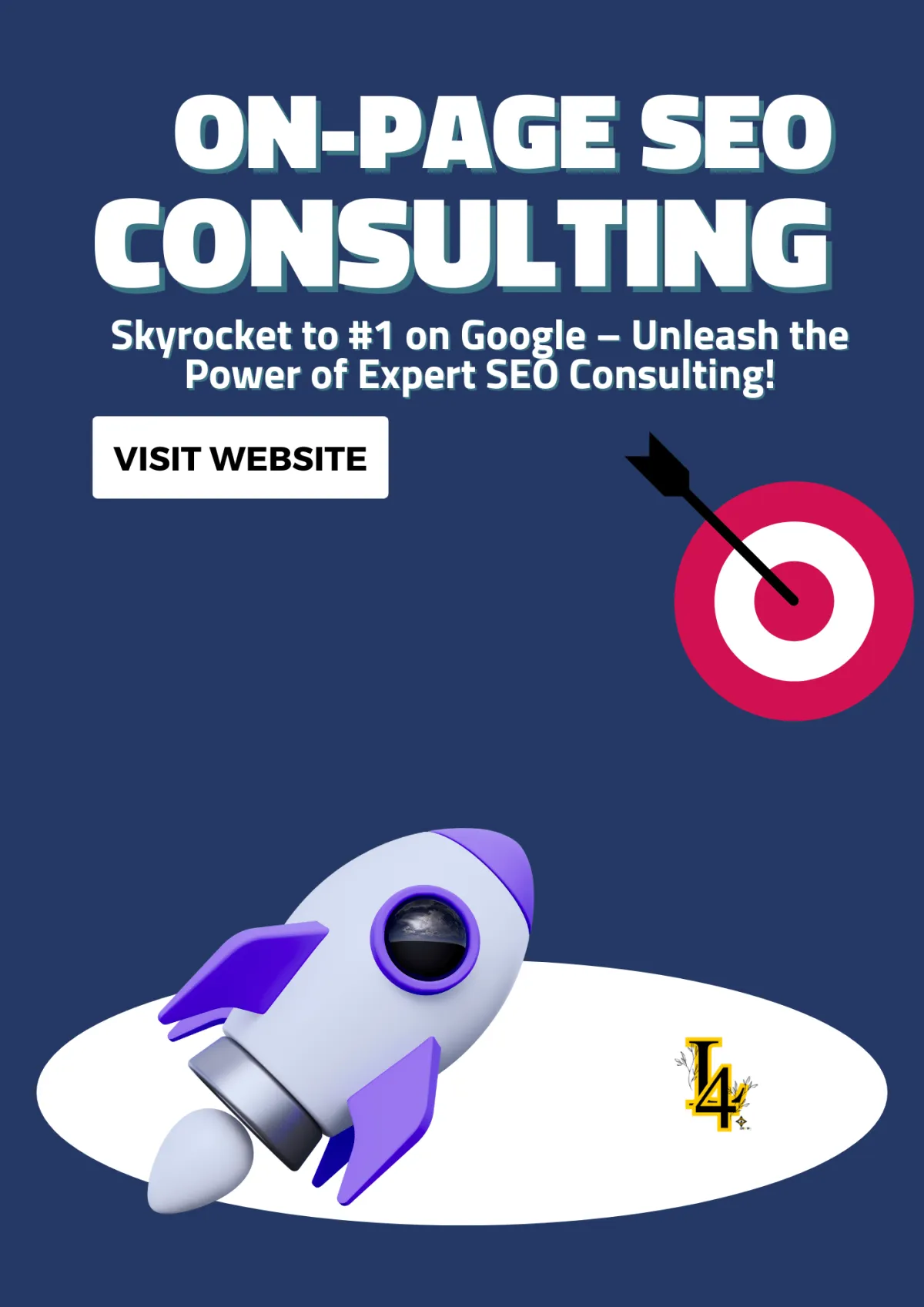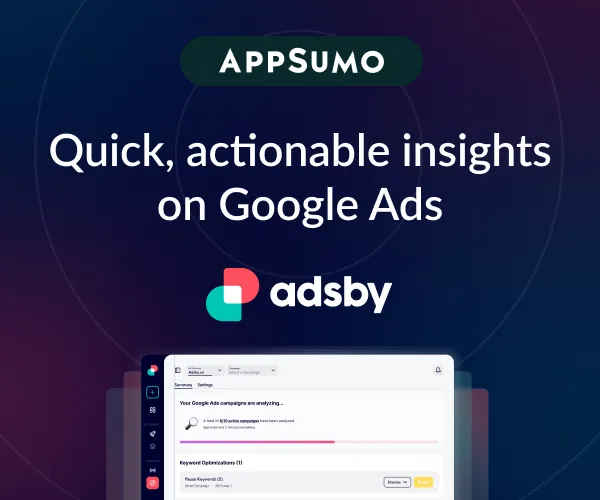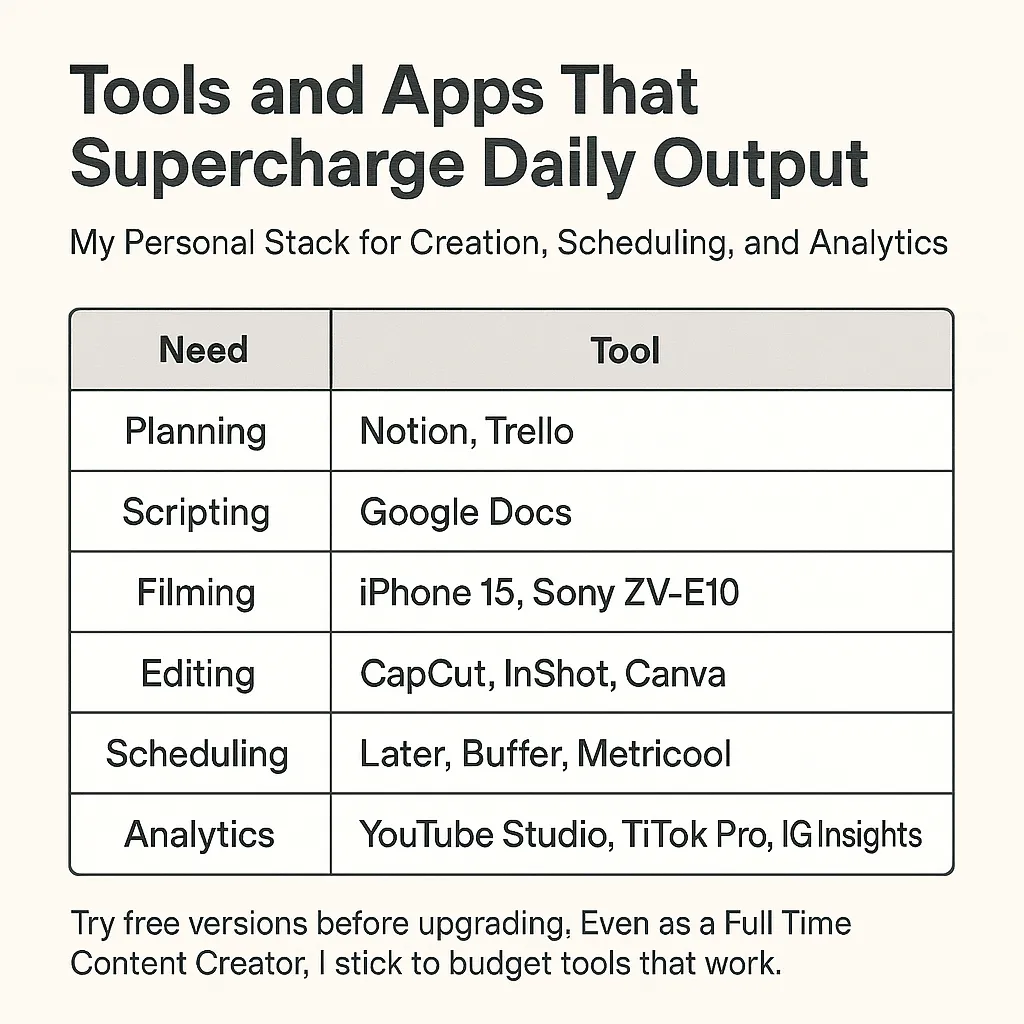
How to Use Google Analytics to Find Page Rankings on Google
Understanding how your pages rank on Google can mean the difference between success and obscurity. Google Analytics is a powerful tool that provides insights into your website’s performance, helping you identify which pages are ranking and driving traffic. If you're wondering how to find page rankings on Google using Google Analytics, this guide is for you.
Table Of Content
Finding Page Rankings with Google Analytics
1. Connect Google Analytics to Google Search Console
2. Navigate to Search Console Reports in Google Analytics
4. Identify Keywords Driving Traffic
5. Compare Page Performance Over Time
Pro Tips for Improving Page Rankings
Using Other Tools Alongside Google Analytics
Common Mistakes to Avoid When Using Google Analytics to Find Page Rankings on Google
Advanced Filtering Techniques in Google Analytics to Find Page Rankings on Google
Encouragement for Beginners: Mastering Google Analytics to Find Page Rankings on Google
Bounce Rate: The Frenemy of Page Rankings
How to Reduce Bounce Rate (Without Losing Your Mind)
CTR Optimization: The Art of the Clickbait (Without the Guilt)
How I Optimized My CTR (and You Can Too)
Finding Gold in Google Analytics
How I Use Google Analytics to Improve CTR
Pro Tip: Pair Google Analytics with Other Tools
A Guide to Segment Traffic by Source in Google Analytics
Step 1: Navigate to Your Audience Report
Step 3: Analyze Each Segment Separately
Step 4: Use Data to Optimize Traffic Sources
Pro Tips for Segmentation Success
Conclusion for "How to Use Google Analytics to Find Page Rankings on Google"

Finding Page Rankings with Google Analytics
1. Connect Google Analytics to Google Search Console
Before diving into page ranking data, ensure that your Google Analytics account is connected to Google Search Console. This integration allows you to access search queries, impressions, clicks, and ranking positions.

Steps to connect:
Open Google Analytics.
Navigate to Admin > Property Settings.
Scroll to the Search Console section and click Adjust Search Console.
Follow the prompts to link your Search Console account.
2. Navigate to Search Console Reports in Google Analytics
Once the accounts are linked, you can view search ranking data directly within Google Analytics.
Go to Acquisition > Search Console > Landing Pages.
This report shows data on how your pages perform in search results, including their average position, impressions, clicks, and click-through rate (CTR).

3. Analyze the Data
The Landing Pages report provides crucial insights into page rankings:
Average Position: This metric indicates your page’s average ranking position on Google search results. Positions 1-10 are on the first page of Google.
Impressions: The number of times your page appeared in search results.
Clicks: How many users clicked on your page from the search results?
CTR: The percentage of users who clicked on your page after seeing it in search results.
Sort and filter the data to identify top-performing pages and opportunities for improvement.
4. Identify Keywords Driving Traffic
To see the specific keywords that bring users to your pages:
Go to Acquisition > Search Console > Queries.
This report shows the search terms users entered to find your pages, along with their average ranking position.
5. Compare Page Performance Over Time
Track how your page rankings change over time by adjusting the date range in Google Analytics. This helps you evaluate the effectiveness of your SEO efforts.
Pro Tips for Improving Page Rankings
Optimize High-Impression, Low-CTR Pages: If a page has many impressions but a low CTR, improve its title and meta description to make it more appealing.
Focus on Content Quality: Ensure your content is valuable, relevant, and optimized for the keywords you want to rank for.
Build Backlinks: High-quality backlinks signal authority to search engines, improving your rankings.
Enhance User Experience: Ensure your site is mobile-friendly, loads quickly, and provides easy navigation.
Using Other Tools Alongside Google Analytics
While Google Analytics provides valuable data, pairing it with tools like Google Search Console, SEMrush, or Ahrefs can give you a more comprehensive view of your rankings and help refine your SEO strategy.

Common Mistakes to Avoid When Using Google Analytics to Find Page Rankings on Google
When I first delved into using Google Analytics to find page rankings on Google, I encountered several challenges that hindered my ability to extract accurate and actionable insights. Reflecting on my journey, I realize that many of these obstacles were due to common mistakes that are easily avoidable with the right knowledge. Here are some pitfalls I encountered and how you can steer clear of them:
1. Missing or Duplicate Google Analytics Tracking Code
In the early stages, I overlooked the importance of correctly implementing the Google Analytics tracking code across all pages of my website. This oversight led to incomplete data collection, making it difficult to assess page performance accurately. To avoid this mistake:
Ensure Proper Implementation: Verify that the tracking code is present on every page of your website. Missing codes result in data gaps, while duplicate codes can inflate metrics inaccurately.

Use Site Crawlers for Verification: Tools like Screaming Frog can crawl your website to identify pages missing the tracking code or containing duplicates. Regular audits with such tools help maintain data integrity.
2. Incorrect Setup of Interaction Events
Initially, I configured interaction events without fully understanding their impact on metrics like bounce rate. This misconfiguration led to misleading data interpretations. To prevent this:
Understand Interaction Events: Interaction events, such as button clicks or video plays, should be set up correctly to reflect true user engagement. Misconfigured events can distort metrics, leading to incorrect conclusions.
Configure Non-Interaction Hits Appropriately: For events that should not affect the bounce rate, set them as non-interaction hits. This ensures that automated events don't skew engagement metrics.
3. Excluding Internal Traffic
In the beginning, I neglected to filter out internal traffic, which resulted in skewed data that didn't accurately represent external user behavior. To avoid this:
Implement IP Filters: Exclude internal traffic by setting up filters for your organization's IP addresses. This ensures that only genuine user interactions are analyzed, providing a clearer picture of your audience's behavior.

4. Ignoring Analytics Data
At times, I failed to regularly review the analytics data, missing out on valuable insights that could have informed my SEO strategies. To prevent this oversight:
Regularly Review Analytics: Consistently monitor your Google Analytics data to stay informed about your website's performance. Regular analysis helps identify trends, issues, and opportunities for optimization.
Advanced Filtering Techniques in Google Analytics to Find Page Rankings on Google
As I became more proficient with Google Analytics, I discovered advanced filtering techniques that allowed me to extract more precise insights into my page rankings on Google. These methods enabled me to tailor data analysis to specific needs, leading to more informed decisions. Here's how you can leverage these techniques:
1. Utilizing Predefined Filters
Predefined filters offer a straightforward way to include or exclude specific data sets without complex configurations. I found them particularly useful for:
Excluding Internal Traffic: By applying predefined filters, I could exclude traffic from specific IP addresses, ensuring that internal visits didn't skew my data.
Including Specific Domains: When analyzing traffic from particular sources, predefined filters allowed me to focus on data from selected domains, providing targeted insights.
2. Creating Custom Filters
For more granular data analysis, custom filters became invaluable. They enabled me to:
Segment Data by Subdomains: By setting up custom filters, I could analyze traffic to different subdomains separately, allowing for a deeper understanding of user behavior across various sections of my site.
Filter by User Behavior: Custom filters allowed me to segment data based on user actions, such as sessions with multiple page views or specific engagement metrics, facilitating targeted analysis.
Custom HTML/CSS/JAVASCRIPT
3. Applying Advanced Filters with Regular Expressions (Regex)
As I sought to refine my data analysis further, advanced filters using regular expressions proved to be powerful tools. They allowed me to:
Match Complex URL Patterns: With regex, I could create filters that matched specific URL structures, enabling precise tracking of user interactions with particular content types.
Exclude Unwanted Traffic: By defining patterns associated with bots or spam, I used regex filters to exclude irrelevant traffic, ensuring cleaner data for analysis.
4. Implementing Include/Exclude Filters
Include and exclude filters were instrumental in focusing on relevant data sets:
Including Traffic from Specific Campaigns: By setting up include filters for particular campaign parameters, I could analyze the effectiveness of targeted marketing efforts.
Excluding Referral Spam: Exclude filters helped me remove spammy referral traffic, maintaining the accuracy of my analytics data.

Encouragement for Beginners: Mastering Google Analytics to Find Page Rankings on Google
Embarking on the journey to master Google Analytics can seem daunting, but based on my experience, it's a rewarding endeavor that significantly enhances your ability to find page rankings on Google. Here's some advice to help you along the way:
1. Start with the Basics
When I began, I focused on understanding fundamental concepts:
Learn the Interface: Familiarize yourself with the Google Analytics dashboard, reports, and navigation. Understanding where to find key metrics is the first step toward effective analysis.
Set Clear Objectives: Define what you aim to achieve with Google Analytics, such as tracking page rankings, monitoring user behavior, or measuring campaign performance.
2. Leverage Educational Resources
I found numerous resources that facilitated my learning:
Google's Analytics Academy: Offers free courses that provide a structured learning path from beginner to advanced levels.
Online Communities and Forums: Engaging with communities like the Google Analytics subreddit or specialized forums allowed me to ask questions and learn from others' experiences.
3. Practice Consistently
The hands-on experience was crucial in building my confidence:
Experiment with Test Views: Create test views in your Google Analytics account to apply filters and configurations without affecting your main data. This safe environment encourages experimentation and learning.
Analyze Real Data: Apply your knowledge to real website data, starting with basic analyses and gradually exploring more complex insights as your skills develop.

My Pro Tips
Benefits of Integrating Google Analytics with Google Search Console:
Comprehensive view of website performance.
Access to search query data.
Enhanced ability to monitor SEO efforts.
Identification of high-performing pages.
Common Mistakes to Avoid:
Missing or duplicate tracking codes.
Incorrect setup of interaction events.
Failing to exclude internal traffic.
Ignoring analytics data.
Advanced Filtering Techniques:
Utilizing predefined filters.
Creating custom filters.
Applying regular expressions (Regex).
Implementing include/exclude filters.
Pro Tips for Improving Page Rankings:
Optimize high-impression, low-CTR pages.
Focus on content quality.
Build authoritative backlinks.
Enhance user experience.

Examples:
Optimizing a High-Impression, Low-CTR Page:
Revise the page's title and meta description to be more compelling and relevant to the target audience.
Creating a Custom Filter:
Set up a filter to segment traffic from a specific marketing campaign to analyze its effectiveness.
Applying Regex in Filters:
Use regular expressions to include all pages containing a certain keyword in their URL for focused analysis.
Excluding Internal Traffic:
Implement an IP filter to exclude visits from your company's network, ensuring data reflects actual user behavior.
Monitoring Page Performance Over Time:
Adjust the date range in Google Analytics to compare current page performance with previous periods, assessing the impact of recent SEO efforts.
How to Use Google Analytics to Find Page Rankings on Google (and Actually Understand What’s Going On)
When I first started diving into the world of Google Analytics, it felt like trying to decode ancient hieroglyphs with a flashlight and a magnifying glass. But guess what? Once you crack the code, it’s like discovering the map to your website’s treasure chest—your page rankings!
In this post, I’ll show you How to Use Google Analytics to Find Page Rankings on Google with some humor, a lot of wit, and practical advice you can actually use. Plus, we’ll dive into why bounce rate is more than just a number to freak you out and how to optimize your click-through rates (CTR) like a pro.
Bounce Rate: The Frenemy of Page Rankings
Let’s talk about bounce rate—that one metric that makes your palms sweat. It’s like the grade on your report card you don’t want your parents to see. A high bounce rate means people are clicking onto your page and then leaving faster than they arrived, without so much as a "Hey, nice website!" And guess what? Google notices.
Why Bounce Rate Matters
Google’s algorithm is like a nosy neighbor—it watches everything. If people are bouncing off your page, Google assumes it’s because your content isn’t useful. Translation? Lower page rankings on Google. Ouch.
How to Reduce Bounce Rate (Without Losing Your Mind)
Here’s how I tackled my bounce rate problem and saved my rankings from plummeting into the abyss:
Make Your Content Useful and Fun
I realized my visitors weren’t sticking around because my content was about as exciting as watching paint dry. So, I jazzed it up with humor, bullet points (because people love lists), and real-world examples.Add Internal Links
I strategically linked to other pages on my site. If someone came to read about “How to Use Google Analytics to Find Page Rankings on Google,” I’d suggest they also check out “SEO Mistakes You’re Probably Making Right Now.”Optimize Page Load Times
I found out my pages were slower than a dial-up connection in 1999. Tools like GTmetrix helped me identify what was dragging me down (looking at you, giant image files).Check Mobile Usability
Turns out, half my traffic came from mobile devices, but my site wasn’t optimized. Rookie mistake! Using Google’s Mobile-Friendly Test helped me whip my pages into shape.

CTR Optimization: The Art of the Clickbait (Without the Guilt)
CTR, or click-through rate, is the shiny golden ticket in your website’s SEO game. It’s the percentage of people who see your page in search results and actually click on it. High CTR? Google loves you. Low CTR? Google ghosts you.
Why CTR is a Game-Changer
Think of CTR as the ultimate popularity contest. If no one clicks on your page, Google assumes it’s boring or irrelevant. But a killer CTR can boost your page rankings faster than you can say “meta description.”
How I Optimized My CTR (and You Can Too)
I decided to tackle CTR head-on, armed with caffeine, determination, and a plan:
Write Titles That Grab Attention
My old titles were dull, like “How to Rank a Website.” Snooze. I started writing titles like, “How to Rank Your Website on Google (Without Losing Your Sanity).” Boom—clicks went up 30%.Perfect the Meta Description
Your meta description is like your elevator pitch. It needs to scream, “Click me, I’m worth it!” I added power words like “proven,” “easy,” and “essential” to entice readers.Use Numbers and Lists
For some reason, humans love lists. So, I updated my titles to things like, “10 Secrets to Boost Your Page Rankings Using Google Analytics.” Numbers = clicks.A/B Testing is Your Friend
I tested different headlines and meta descriptions to see which performed better. Turns out, my audience prefers titles with a little humor and a lot of specifics.
Finding Gold in Google Analytics
Using Google Analytics to find page rankings on Google isn’t just about staring at charts and pretending you understand them. It’s about making sense of the data and using it to your advantage.
How I Use Google Analytics to Improve CTR
Here’s my foolproof process:
Check Queries in Search Console Reports
I navigate to Acquisition > Search Console > Queries to see which search terms are driving impressions. If a keyword has a high impression count but a low CTR, I know it’s time to tweak my title and meta description.Track Landing Page Performance
Under Acquisition > Search Console > Landing Pages, I analyze which pages are bringing in traffic and which are flopping. This helps me prioritize updates.Compare CTR Over Time
Using the date range filter, I track how my CTR changes after I make tweaks. Nothing feels better than watching those clicks climb.
Pro Tip: Pair Google Analytics with Other Tools
Google Analytics is amazing, but pairing it with complementary tools can take your insights to the next level. Here are a few of my go-to tools:
SEMrush: Helps me find competitor keywords and see how they’re performing.
Hotjar: Tracks user behavior on my pages, showing me where they click and where they get stuck.
Google Optimize: Lets me A/B test headlines, layouts, and even images to improve CTR.
Custom HTML/CSS/JAVASCRIPT
A Guide to Segment Traffic by Source in Google Analytics
When it comes to analyzing your website's performance, one-size-fits-all data doesn’t cut it. To truly understand what’s working and where you need to improve, you have to break down your traffic into specific sources. This is where segmentation in Google Analytics comes into play—it lets you analyze organic, referral, and direct traffic separately, giving you actionable insights.
Step 1: Navigate to Your Audience Report
First, log into your Google Analytics account. From the main dashboard:
Head to Audience in the left-hand menu.
Click Overview to get a quick snapshot of your traffic.
But we’re not stopping here. This is where the magic of segmentation begins.
Step 2: Add a New Segment
Segments allow you to filter data based on specific criteria, like traffic sources. To add a new segment:
Click the + Add Segment button at the top of your report.
Choose from the preset options or create a custom segment. For traffic sources, the presets for Organic Traffic, Referral Traffic, and Direct Traffic work well.
Organic Traffic Segment
Shows visitors who arrived via search engines.
Helps you evaluate SEO performance and keyword strategies.
Referral Traffic Segment
Captures visitors who clicked on a link from another site.
Perfect for analyzing backlinks, guest posts, or social media campaigns.
Direct Traffic Segment
Tracks visitors who typed your URL directly or came via saved bookmarks.
Useful for assessing brand awareness and repeat visitors.
Step 3: Analyze Each Segment Separately
Once your segments are applied, you’ll see how traffic from each source contributes to your overall website performance. Here’s what to look for:
Organic Traffic Analysis
Landing Pages: Navigate to Behavior > Site Content > Landing Pages to see which pages are pulling in organic traffic. Are they optimized for relevant keywords?
Queries: Check Acquisition > Search Console > Queries to identify the search terms driving traffic.
Referral Traffic Analysis
Source: Head to Acquisition > All Traffic > Referrals to view which sites are linking to you. Look for high-quality links that send consistent traffic.
Engagement Metrics: Review bounce rate and time on site for referral visitors. If they’re bouncing quickly, evaluate whether the referring link aligns with your content.
Direct Traffic Analysis
Pages: Check Behavior > Site Content > All Pages to see where direct visitors are landing. Are they heading to your homepage or specific content?
Campaigns: Use UTM parameters to track offline campaigns like flyers or QR codes that drive direct traffic.
Step 4: Use Data to Optimize Traffic Sources
Now that you’ve segmented your traffic and reviewed the data, here’s how to use those insights to improve:
Organic Traffic Optimization
Update top-performing content with fresh keywords and data.
Improve underperforming pages by adding value, visuals, or internal links.
Referral Traffic Growth
Reach out to high-performing referral sources to build stronger partnerships.
Create shareable content, like infographics or case studies, that encourages backlinks.
Direct Traffic Strategy
Boost brand awareness through offline advertising or word-of-mouth campaigns.
Use personalized URLs (like branded short links) to track direct visitors more accurately.
Pro Tips for Segmentation Success
Combine Multiple Segments: Want to analyze organic traffic from mobile users? Create a custom segment combining traffic source and device type.
Set Goals: Use Conversions > Goals to measure how well each traffic source drives valuable actions, like purchases or sign-ups.
Compare Date Ranges: Use the date filter to track how changes in your strategy affect different traffic sources over time.
Conclusion for "How to Use Google Analytics to Find Page Rankings on Google"
Google Analytics is your gateway to understanding your website’s performance and uncovering opportunities for growth. By leveraging its powerful tools—like Search Console reports, query tracking, and performance analysis—you can not only identify how your pages rank on Google but also take actionable steps to improve those rankings.
From connecting Search Console for enriched data to monitoring keywords and page performance over time, the process empowers you to fine-tune your SEO strategies. Pairing Google Analytics with complementary tools like SEMrush or Hotjar enhances these insights, ensuring you stay ahead of the competition.
Key Takeaways:
Regularly analyze landing pages to pinpoint your best-performing content.
Optimize high-impression, low-CTR pages for better engagement.
Combine tools and advanced filtering techniques to refine your strategy.
Avoid common mistakes like missing tracking codes or failing to exclude internal traffic.
With a clear plan and consistent analysis, Google Analytics becomes your ultimate ally in climbing the search engine rankings and driving more traffic to your site.


















